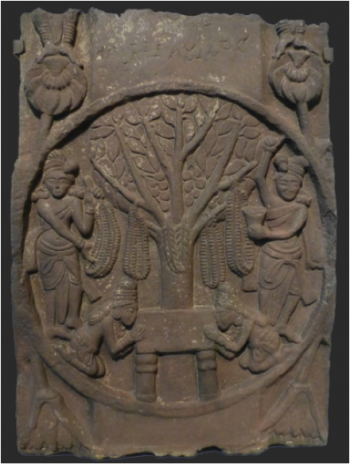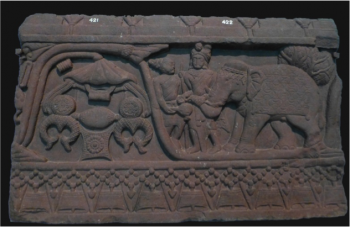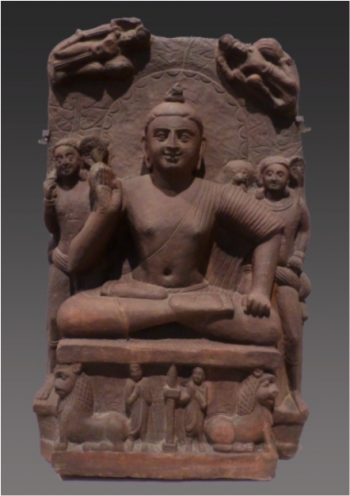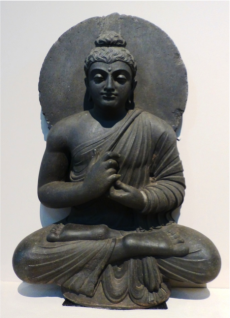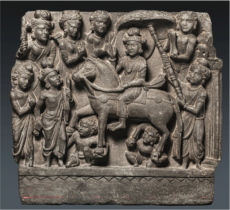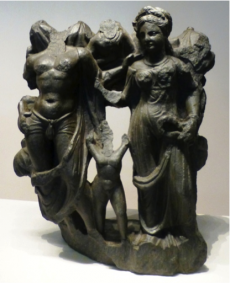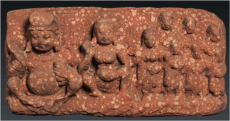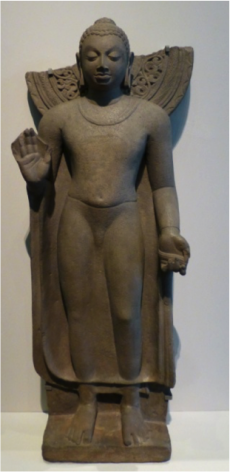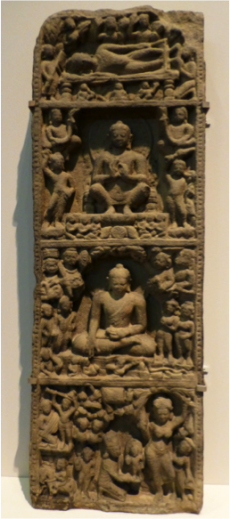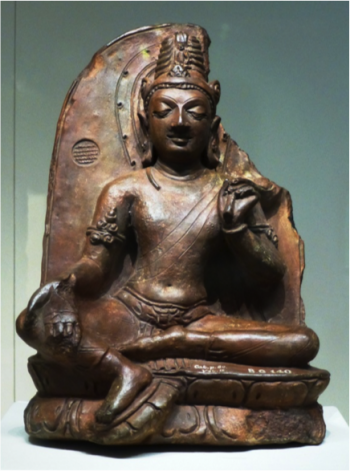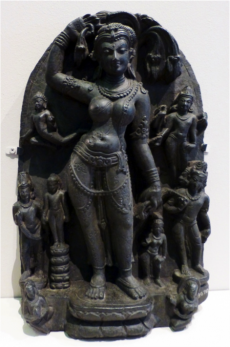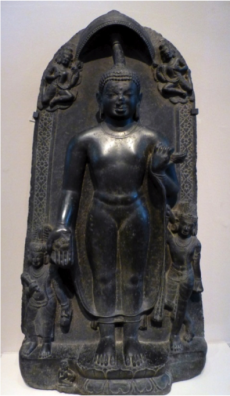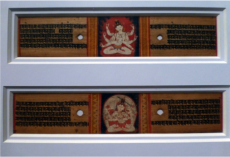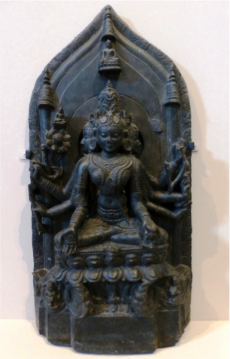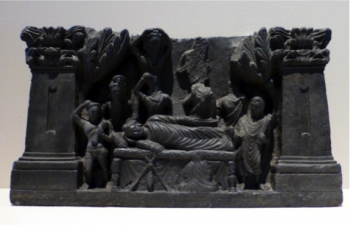To walk through the gallery of dramatic sculptures and reliefs is to take a journey back in time and to witness the Buddha’s past lives as told in the Jataka stories, his life as Prince Siddhartha, his enlightenment under the Bodhi tree, his first sermon at the Deer Park in Sarnath, and his mahaparinirvana. Through this visual biography, one sees the evolution of Buddhism and its concepts through the centuries, from Theravada to Mahayana to Vajrayana, and from the early aniconic imagery to the various anthropomorphic representations of the Buddha and the pantheon of bodhisattvas and deities inspired by the rich Indian traditions.
Among the oldest of the exhibits are large, round medallions from the railing pillars that surrounded the Bharhut stupa. Unearthed by British archaeologist Alexander Cunningham in the Satna district of Madhya Pradesh in central India, the Bharhut stupa is believed to have been built by the emperor Ashoka during the Mauryan era (322–180 BCE). In this aniconic phase, the Buddha is never seen but is present through symbols such as the Dharmachakra or “Dharma wheel,” which represents the Buddha’s universal teachings; the Bodhi tree, representing his enlightenment; and the Buddha footprints, the empty throne, the lions, and the lotus.
Jataka tales, or stories of the Buddha’s previous lives, are popular themes for Buddhist art in all forms. One of the four reliefs from Bharhut depicts the story of Prince Vessantara, who is renowned for his extraordinary acts of generosity.
During the Kushan period (1st–3rd century), anthropomorphic representations of the Buddha began to appear in northern India. By the time of Kanishka the Great (r. 127–51), the Kushan empire had expanded such that it was governed by two capitals, Mathura in northern India and Purushapura (now Peshawar) near the Khyber Pass, correspondingly giving rise to two great artistic centers each with a distinctive style—Mathura and Gandhara.
